The TASSAJARA BREAD BOOK  Edward Espe Brown
Edward Espe Brown  S HAMBHALA Boston & London 2011 S HAMBHALA P UBLICATIONS , I NC. Horticultural Hall 300 Massachusetts Avenue Boston, Massachusetts 02115 www.shambhala.com 1970 by the Chief Priest, Zen Center, San Francisco Cover design by Jim Zaccaria Cover art by Kent Rush Revisions 1986, 1995, 2009 by Edward Espe Brown Illustrations 2009 by John David Simpkins All rights reserved. No part of this book may be reproduced in any form or by any means, electronic or mechanical, including photocopying, recording, or by any information storage and retrieval system, without permission in writing from the publisher. The Library of Congress catalogues the hardcover edition of this book as follows: Brown, Edward Espe. The Tassajara bread book / Edward Espe Brown. cm. cm.
S HAMBHALA Boston & London 2011 S HAMBHALA P UBLICATIONS , I NC. Horticultural Hall 300 Massachusetts Avenue Boston, Massachusetts 02115 www.shambhala.com 1970 by the Chief Priest, Zen Center, San Francisco Cover design by Jim Zaccaria Cover art by Kent Rush Revisions 1986, 1995, 2009 by Edward Espe Brown Illustrations 2009 by John David Simpkins All rights reserved. No part of this book may be reproduced in any form or by any means, electronic or mechanical, including photocopying, recording, or by any information storage and retrieval system, without permission in writing from the publisher. The Library of Congress catalogues the hardcover edition of this book as follows: Brown, Edward Espe. The Tassajara bread book / Edward Espe Brown. cm. cm.
Includes index. eISBN 978-0-8348-2301-3 ISBN 978-1-59030-704-5 ISBN 978-1-59030-836-3 (pbk.: alk. paper) 1. Bread. I. Title.
TX769.B83 2009 641.815dc22 2008044901 Dedicated with respect and appreciation to all my teachers past, present, and future: gods, men, and demons; beings, animate and inanimate, living and dead, alive and dying. Rock and water wind and tree bread dough rising Vastly all are patient with me . Bread makes itself, by your kindness, with your help, with imagination streaming through you, with dough under hand, you are breadmaking itself, which is why breadmaking is so fulfilling and rewarding. Recipes do not belong to anyonegiven to me, I give them to you. Recipes are only a guide, a skeleton framework, to be fleshed out according to your nature and desire. Your life, your love, will bring these recipes into full creation.
This cannot be taught. You already know. So plunge in: cook, love, feel, create. Actualize breadmaking itself. Contents I N THE BASEMENT OF THE S HAMBHALA B OOKSTORE IN Berkeley, California, in 1969, Sam Bercholz of Shambhala Publications saw something he liked in a tattered xeroxed manuscript, and said, Ill give up a $100 advance and 10 percent royalty. Deal.
And then he helped conceive many of the original design features: round picture on the cover, brown ink, calligraphy, drawings by Anne Kent Rush and Frances Thompson. The resulting book struck a chord. This edition, with a new design and decorative drawings by John David Simpkins (a blessing in my life), is the vision of Peter Turner, current president of Shambhala Publications. Along with inspired publishing, the fact that this book ever came into being is rather incomprehensible and mysteriouswho would have thought? This book first came about as a response to the numerous requests of the students and guests at Tassajara. At their urging, I began to envision what my bread book would be like. In the kitchen we started writing down everything we made.
So for the recipes themselves, I would like to acknowledge and thank the following people: Lynn Good, Loring Palmer, Clarke Mason, Alan Winter, Roovan ben Yuhmin, Sandy Hollister, Kobun Chino, Bill Lane, Bob Shuman, Jeff Sherman, Angie Runyon, Maureen or perhaps Madeleine, Connie, Sandy, Niels Holm, Mary Quagliata, Grandma Dite, and all the other people who have made manifest their love, working in the Beloved Kitchens of Tassajara. (Some of these people have since become Ancestors.) At times I rather despaired of seeing this book completed. Fortunately the project had the help and encouragement of many people: I am particularly grateful to Katherine Thanas for her efforts as editor, typist, consultant, proofreader, analyst, and friend, and for her incorrigible good nature. What does this mean? she would tease. Others who assisted with typing and editing included Alan Marlowe and Diane DiPrima. Frances Thompson contributed the essential how-to illustrations and Anne Kent Rush did the original decorative drawings.
Members of Zen Center supported me and the process: Peter Schneider, Yvonne Rand, Dick and Virginia Baker, and more recently Michael Wenger and Mel Weitsman. New to writing I found encouragement from Elizabeth Williams and the Wolfs of Portola Valley. I will always be grateful to Bob and Anna Beck for getting me started at Tassajara in the summer of 1966, teaching me everything I know, as Anna puts it. Lastly, my gratitude and blessings to Jim Vaughn and Ray Hurslander, my original cooking gurus at Tassajara. They shared everything they could. At the time there was no way to know how extraordinary that was.
May we all nourish each other. Edward Espe Brown January 2009 V ISITING MY A UNT A LICE IN F ALLS C HURCH, V IRGINIA, in the summer of 1955, I discovered home-baked bread. Discovered is probably not an adequate word to convey my heavenly joy in the welcome-home aromas, my intense pleasure in the tasting (with butter and jam!), and my incredible fulfillment in the eating: something inside felt met, wanted to jump up and down, and said thank you . Unlike so many things in life which leave something to be desired, homemade bread fed me. So moved, words tumbled out: I will learn how to make bread, and teach others how to make bread . I had a calling.
The resulting Tassajara Bread Book first appeared in 1970. It was in 1966 that I finally learned to bake bread from Jim Vaughn and Ray Hurslander at Tassajara Hot Springs, the last summer before it was bought by the Zen Center of San Francisco and became a meditation center open to guests from May first through Labor Day. Jimmy and Ray had learned to bake bread from Alan Hooker, a jazz musician who bottomed out, he said, in Columbus, Ohio, and became a bakerlater he would start the Ranch House Restaurant in Ojai, California, where he had moved to study with Krishnamurti. The long lineage of bakers goes back for centuries, as we today share the craft and pass it on to others. With Jim and Ray I again discovered home-baked bread, this time the making of it: wondrous vitality, intimate absorption, disappearing into the processbreadmaking itselflove at first touch. So I have wished to share this, the wholesomeness and well-being that arises in the making, baking, and eating of bread.
What you knead is what you get. Give bread a handand your hands will thank you (along with your stomach). Since The Tassajara Bread Book first appeared, many more bakers, many more bakeries, and many more books on bread have appeared. Unbleached white flour and whole wheat flour are on the supermarket shelves. Small changes, maybe, but I am happy and grateful to have played a small part with the writing of this book. Over the years numerous people have conveyed how much they appreciated this Bread Book: made bread for the first time, enjoyed it, felt the mysterious way in which the simple activity of breadmaking was a fulfilling act of mutual creation, a profound expression of caring, of nurturing oneself and others.
As one woman put it, she experienced a silent, hidden, quiet revolution taking place in the kitchen and her heart. I know I am not a great baker, but a competent and capable one, and I am glad to have shared some of my joy with others, and to have encouraged others to pick up the ingredients and make something. People responded. We can inspire one another. We can share know-how and encouragement. Kerry Smith in Bloomington, Indiana, started baking from the Tassajara Bread Book in 1970, and initially sold homemade bread door-to-door out of the back of his woody station wagon.
Soon, along with members of his ashram, he opened a bakery. Three of them, he said, would knead the bread by hand in a huge mixing bowl, until one day a real baker showed up and laughed at what he saw. He couldnt believe it. Show us, they said, and before long they had seven retail stores and a large bakery plant with a twenty-four-shelf oven. In 1976 when we started our retail bakery, the Tassajara Bread Bakery, in San Francisco, we had no experience baking in quantity like that. Kerry, Tano, and Swami Chetanananda came from Indiana to advise us.
Next page
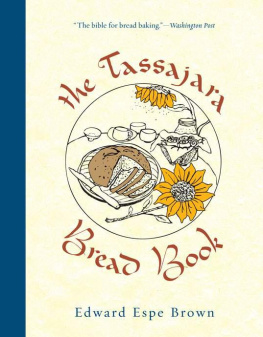
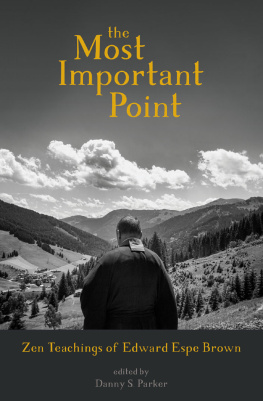


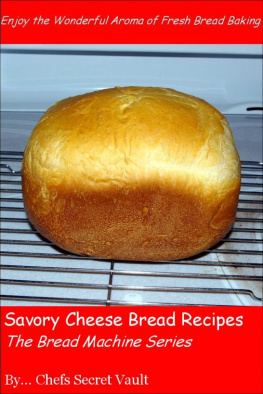

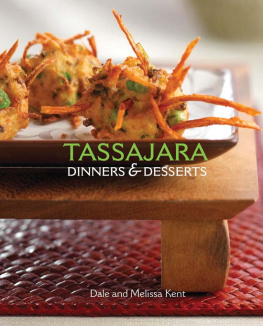
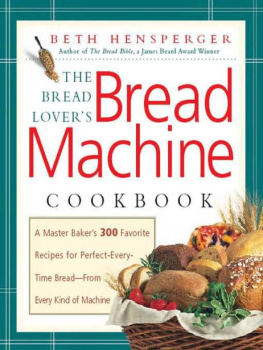
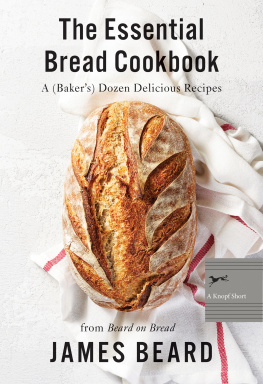

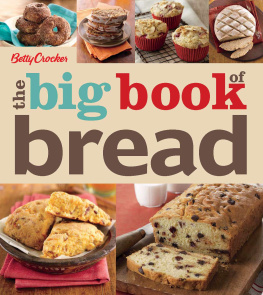
 Edward Espe Brown
Edward Espe Brown  S HAMBHALA Boston & London 2011 S HAMBHALA P UBLICATIONS , I NC. Horticultural Hall 300 Massachusetts Avenue Boston, Massachusetts 02115 www.shambhala.com 1970 by the Chief Priest, Zen Center, San Francisco Cover design by Jim Zaccaria Cover art by Kent Rush Revisions 1986, 1995, 2009 by Edward Espe Brown Illustrations 2009 by John David Simpkins All rights reserved. No part of this book may be reproduced in any form or by any means, electronic or mechanical, including photocopying, recording, or by any information storage and retrieval system, without permission in writing from the publisher. The Library of Congress catalogues the hardcover edition of this book as follows: Brown, Edward Espe. The Tassajara bread book / Edward Espe Brown. cm. cm.
S HAMBHALA Boston & London 2011 S HAMBHALA P UBLICATIONS , I NC. Horticultural Hall 300 Massachusetts Avenue Boston, Massachusetts 02115 www.shambhala.com 1970 by the Chief Priest, Zen Center, San Francisco Cover design by Jim Zaccaria Cover art by Kent Rush Revisions 1986, 1995, 2009 by Edward Espe Brown Illustrations 2009 by John David Simpkins All rights reserved. No part of this book may be reproduced in any form or by any means, electronic or mechanical, including photocopying, recording, or by any information storage and retrieval system, without permission in writing from the publisher. The Library of Congress catalogues the hardcover edition of this book as follows: Brown, Edward Espe. The Tassajara bread book / Edward Espe Brown. cm. cm.